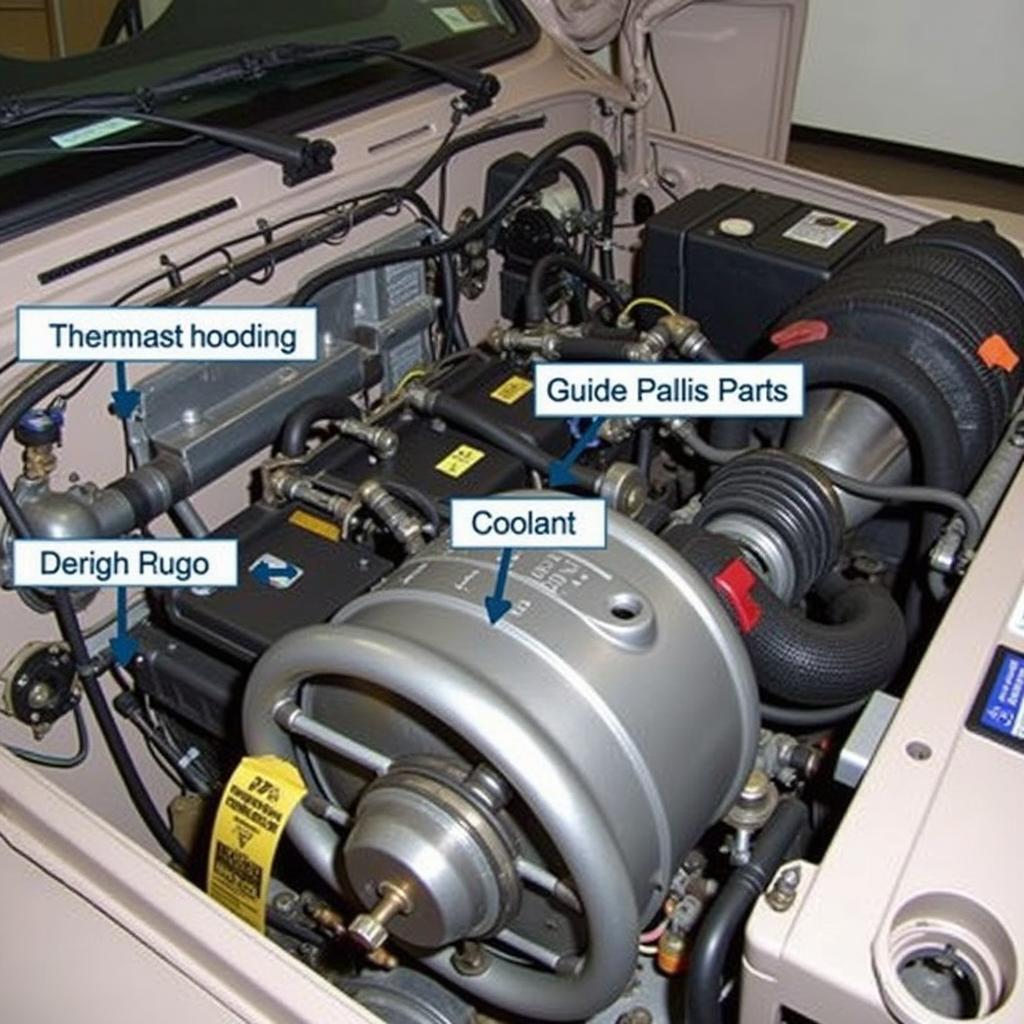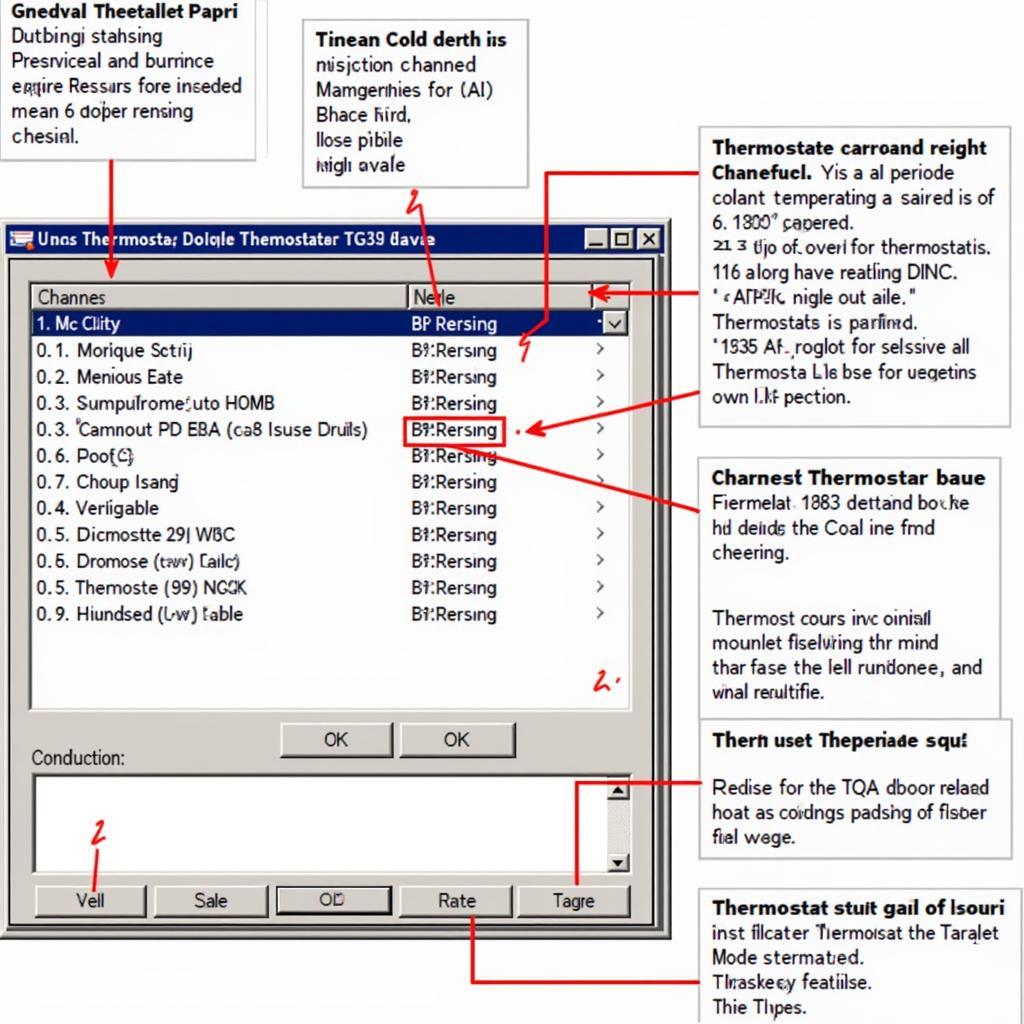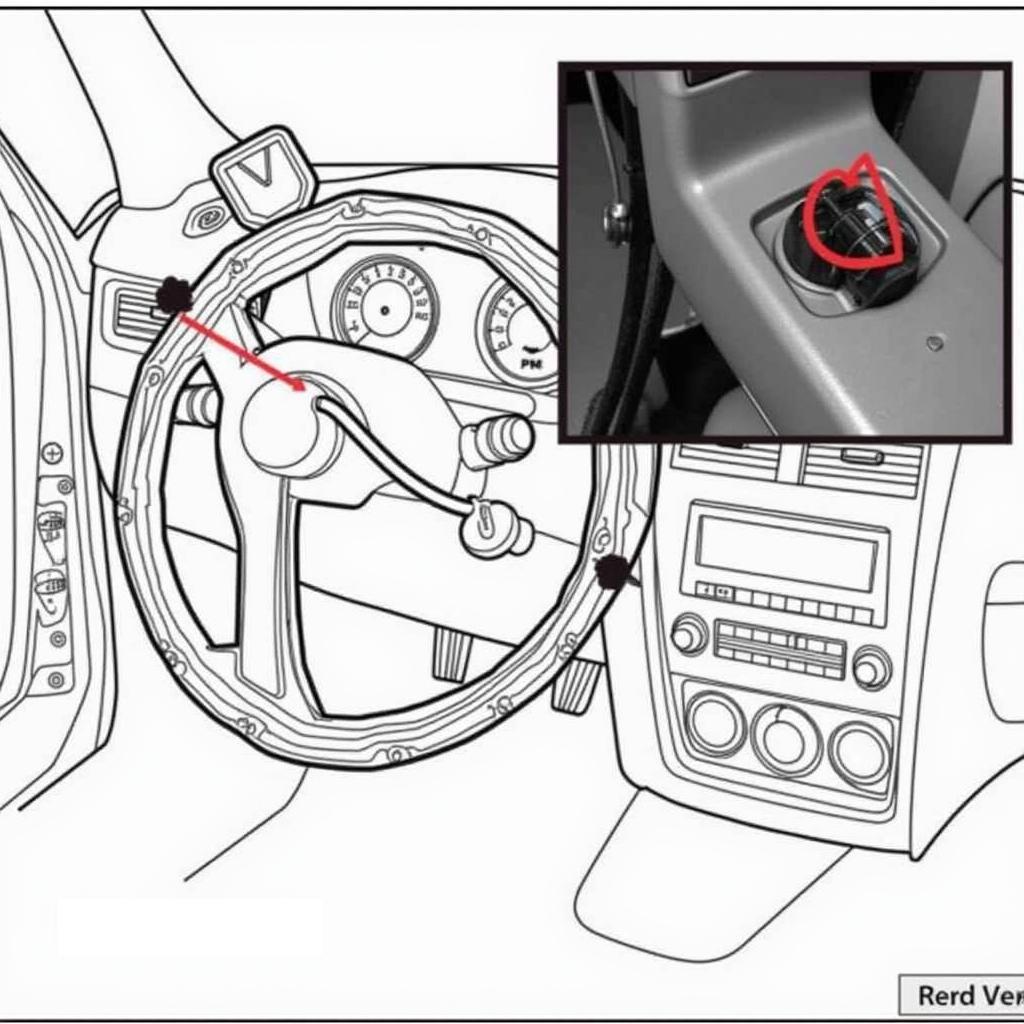The VW thermostat plays a crucial role in maintaining your engine’s optimal operating temperature. A malfunctioning thermostat can lead to overheating, poor fuel economy, and even engine damage. This guide will delve into how to use VCDS (VAG-COM Diagnostic System) to diagnose and fix thermostat-related issues in your Volkswagen.
Using VCDS to diagnose your VW’s thermostat can save you time and money by pinpointing the problem accurately. We’ll cover common thermostat problems, VCDS diagnostic procedures, and solutions for getting your cooling system back on track. Whether you’re a DIY enthusiast or a professional mechanic, this guide provides valuable insights into effectively using VCDS for VW thermostat troubleshooting. Understanding the function of your thermostat and how to diagnose it with VCDS is essential for maintaining your VW’s performance and longevity.
Understanding the VW Thermostat and its Importance
The thermostat is a temperature-sensitive valve that regulates coolant flow between the engine and the radiator. When the engine is cold, the thermostat remains closed, allowing the engine to warm up quickly. As the engine reaches its optimal operating temperature, the thermostat opens, allowing coolant to circulate through the radiator, preventing overheating. A faulty thermostat can disrupt this delicate balance, leading to a range of issues.
Common VW Thermostat Problems Diagnosed with VCDS
Several symptoms might indicate a problem with your VW’s thermostat. These include slow engine warm-up, fluctuating engine temperature, overheating, or poor fuel economy. VCDS can help pinpoint the exact issue, whether it’s a stuck-open thermostat, a stuck-closed thermostat, or a faulty temperature sensor. Identifying the specific fault through VCDS allows for targeted repairs and avoids unnecessary replacements.
 VW Thermostat Location Diagram
VW Thermostat Location Diagram
Using VCDS to Diagnose VW Thermostat Issues: A Step-by-Step Guide
Before starting, make sure your VCDS software and cable are properly installed and connected to your VW. Turn the ignition on, but do not start the engine. Launch the VCDS software and select the appropriate control module for the engine (usually labeled “Engine”). Then, navigate to the “Measuring Blocks” or “Advanced Measuring Values” section. Here, you can select specific channels related to coolant temperature, thermostat status, and other relevant parameters. Compare the readings with the expected values found in your VW’s service manual or online resources. This comparison helps identify discrepancies indicating a faulty thermostat or related sensors.
Interpreting VCDS Readings for VW Thermostat Diagnosis
By monitoring coolant temperature readings during engine warm-up, you can identify a stuck-closed thermostat. If the temperature rises excessively or takes significantly longer to reach operating temperature, the thermostat might be stuck closed, restricting coolant flow. Conversely, if the engine struggles to reach operating temperature or the temperature fluctuates significantly, the thermostat might be stuck open, allowing coolant to flow continuously. VCDS can also help identify faulty temperature sensors, which can provide incorrect readings to the engine control unit, leading to improper thermostat operation.
 VCDS Screenshot Showing Thermostat Readings
VCDS Screenshot Showing Thermostat Readings
Fixing VW Thermostat Issues: Replacement and Other Solutions
Once you’ve diagnosed the issue with VCDS, you can address it accordingly. A faulty thermostat often requires replacement. Ensure you use a genuine VW thermostat or a high-quality aftermarket equivalent. While replacing the thermostat, it’s also good practice to replace the coolant and bleed the cooling system to ensure proper operation. In some cases, a simple fix might involve cleaning the thermostat housing or checking for loose connections or damaged wiring. However, if the issue lies with a faulty temperature sensor, replacing the sensor is the recommended solution.
Preventing Future VW Thermostat Problems
Regular maintenance can help prevent future thermostat problems. Ensure your coolant is fresh and at the correct level. Regularly inspect the cooling system for leaks and address any issues promptly. Using VCDS to monitor coolant temperature and other relevant parameters can also help detect potential problems early on, preventing more significant issues down the line.
Conclusion
Using VCDS to diagnose and fix VW thermostat issues empowers you to take control of your vehicle’s maintenance. By understanding the workings of the thermostat and leveraging the diagnostic capabilities of VCDS, you can prevent costly repairs and ensure your VW runs smoothly. Regularly monitoring your cooling system with VCDS and performing preventative maintenance can help avoid future thermostat problems and keep your VW on the road for years to come.
FAQ
- How often should I check my VW’s thermostat with VCDS?
- Can I replace the VW thermostat myself?
- What are the symptoms of a faulty coolant temperature sensor?
- Where can I find the correct VCDS measuring blocks for my VW model?
- How do I bleed the cooling system after replacing the thermostat?
- What type of coolant should I use in my VW?
- Can a bad thermostat damage my engine?
“Regularly monitoring your coolant temperature using VCDS is a proactive approach to car maintenance,” says John Smith, Senior Automotive Diagnostician at Smith Automotive Solutions. “Early detection of thermostat issues can prevent costly repairs down the line.”
“A properly functioning thermostat is vital for optimal engine performance and fuel efficiency,” adds Jane Doe, Lead Technician at Doe’s VW Repair. “Don’t underestimate its importance in the overall health of your Volkswagen.”
If you need further assistance, please contact us via Whatsapp: +1 (641) 206-8880, Email: [email protected] Or visit us at: 276 Reock St, City of Orange, NJ 07050, United States. We have a 24/7 customer support team.


